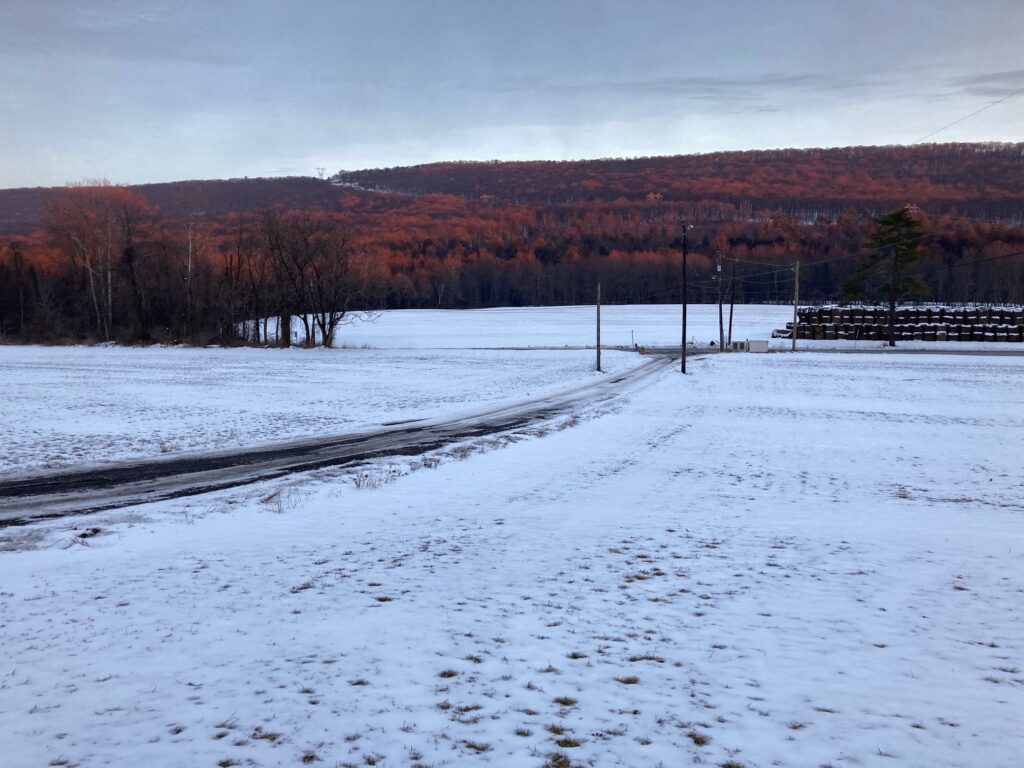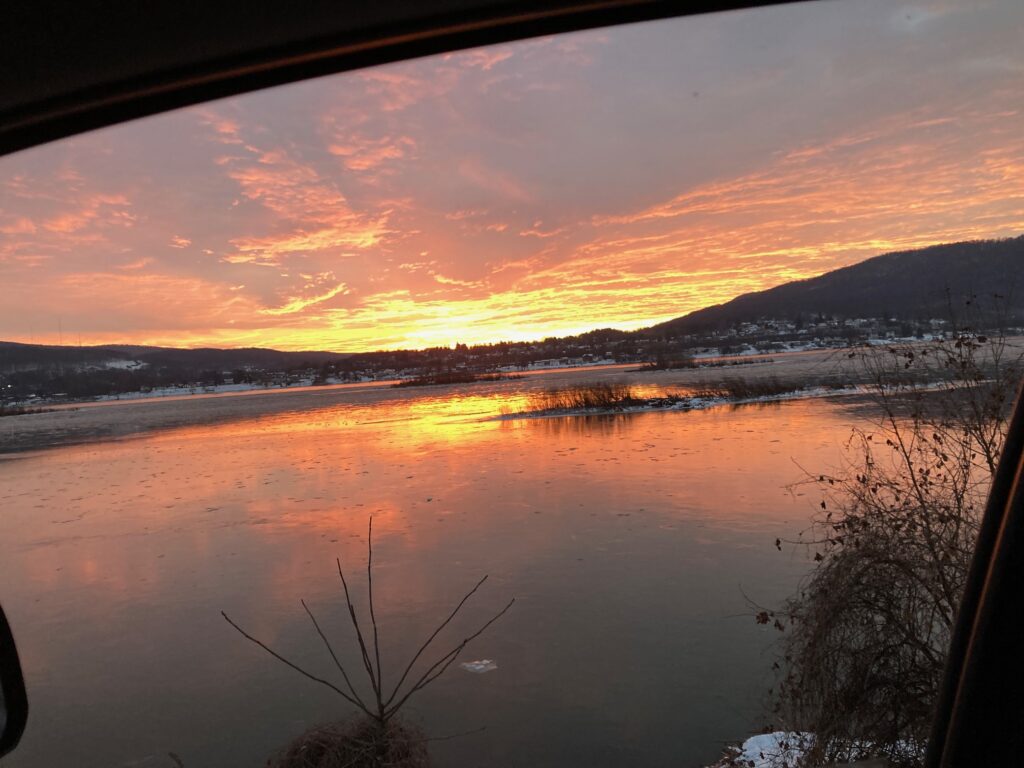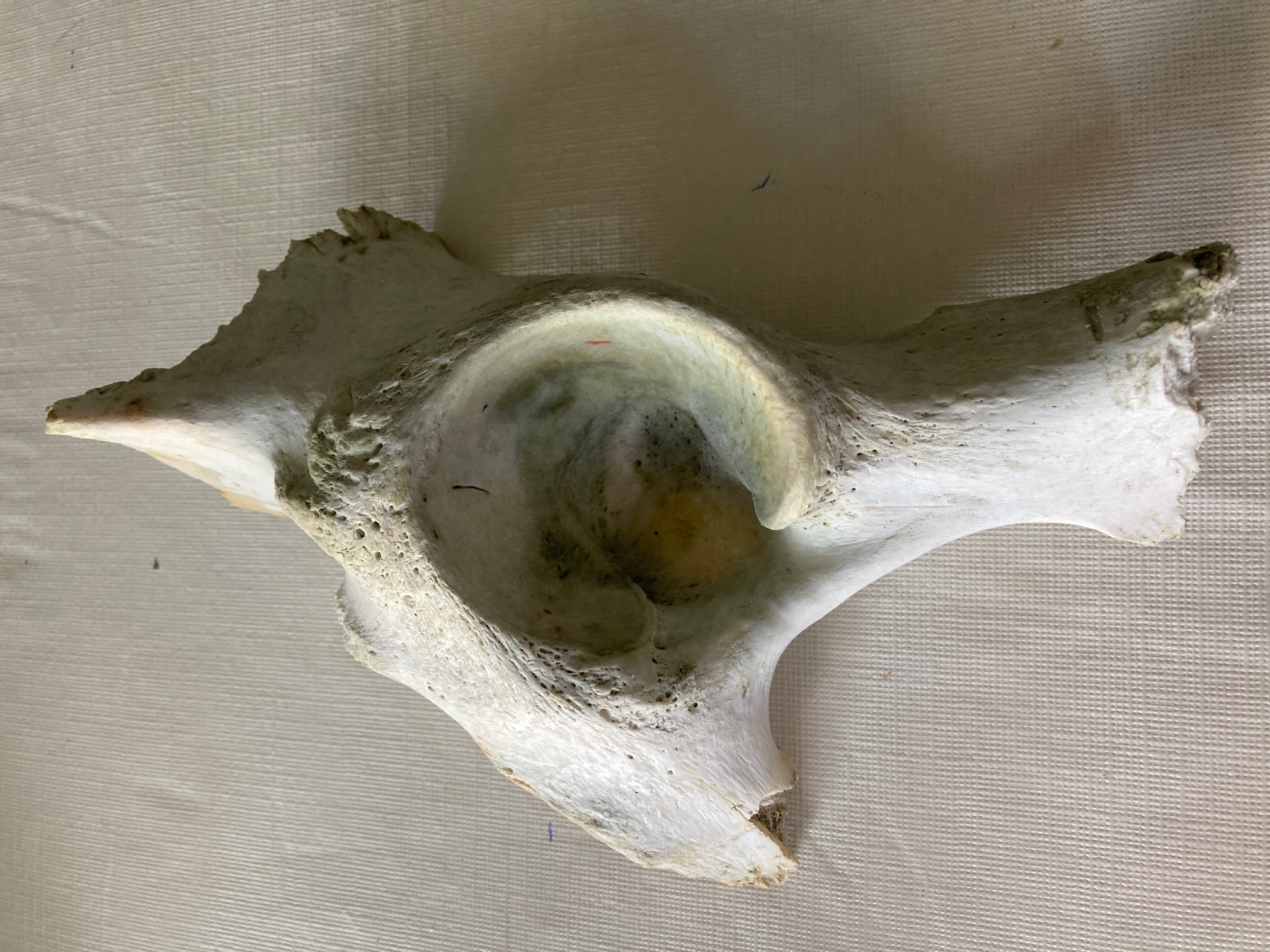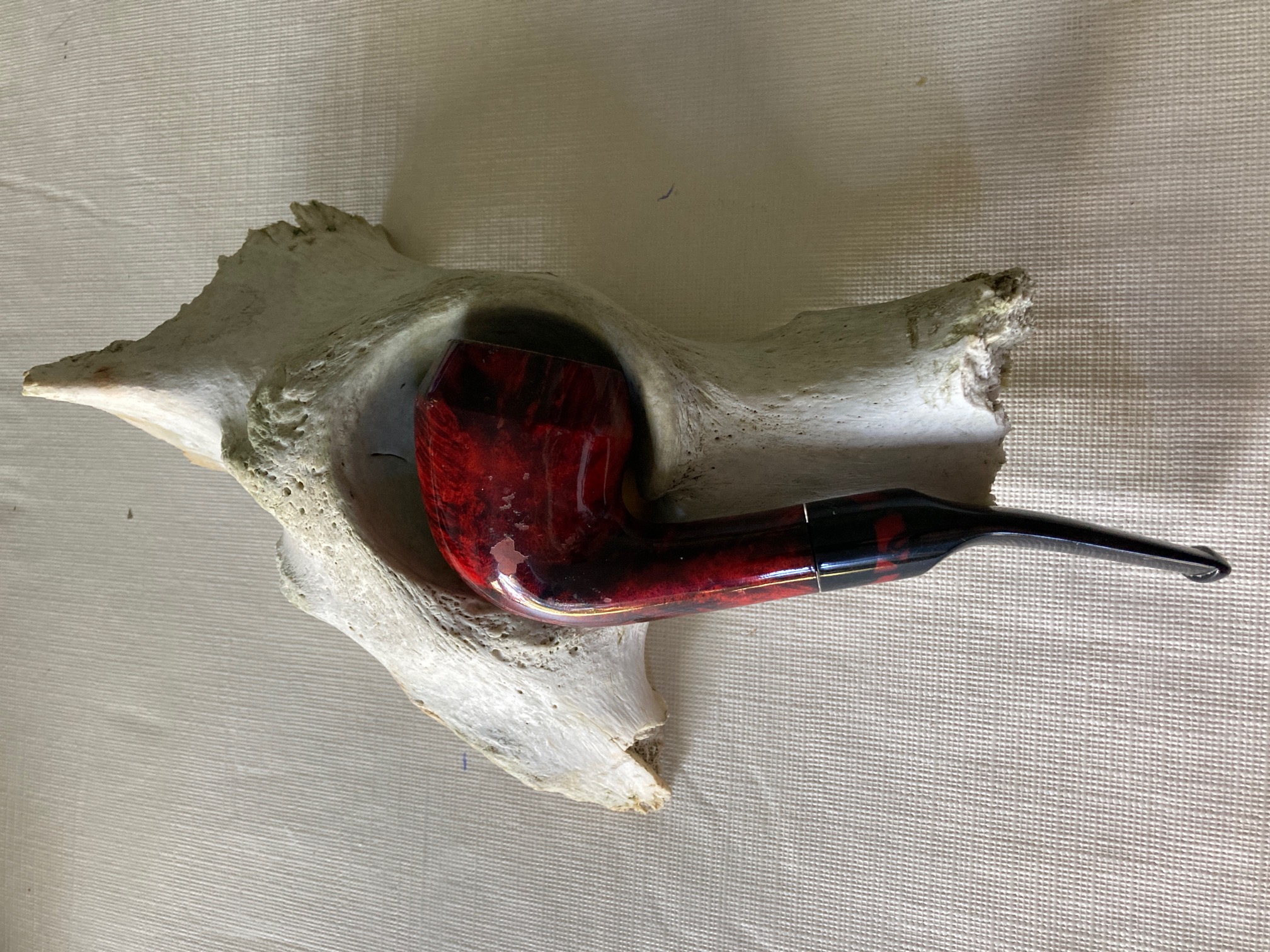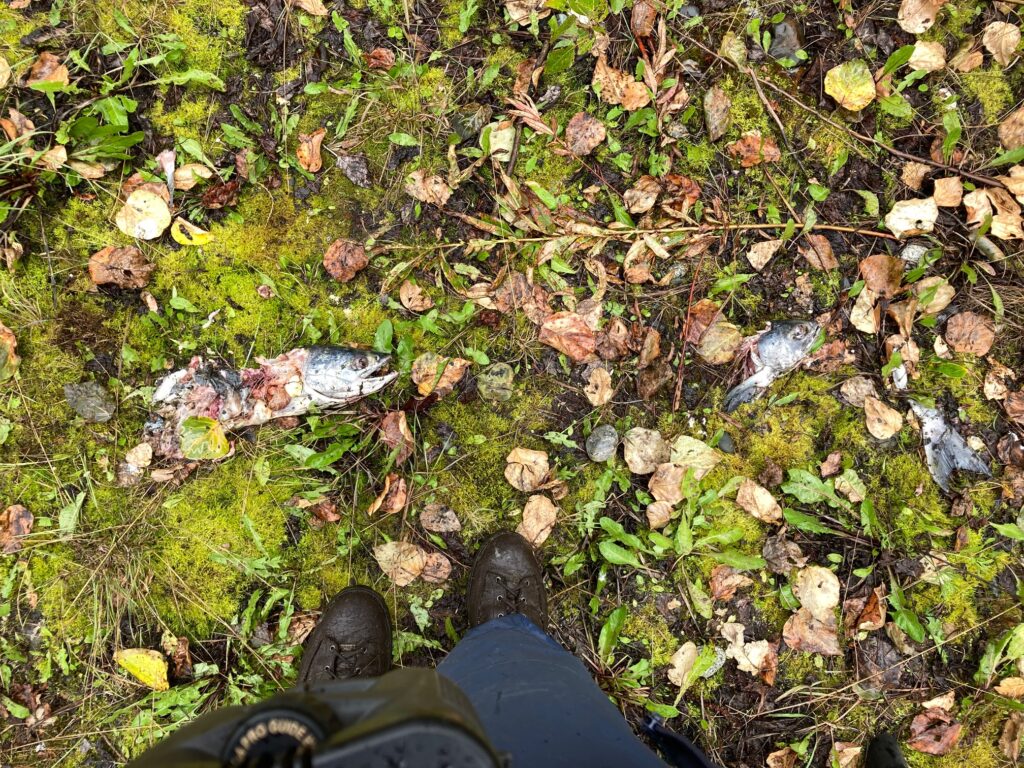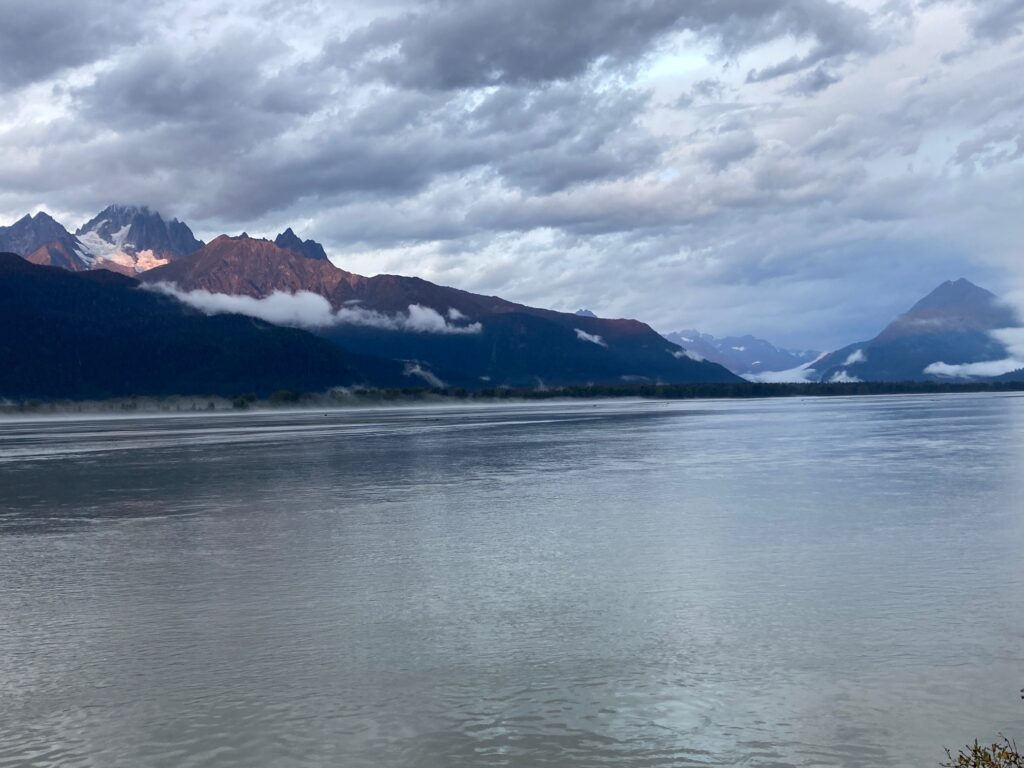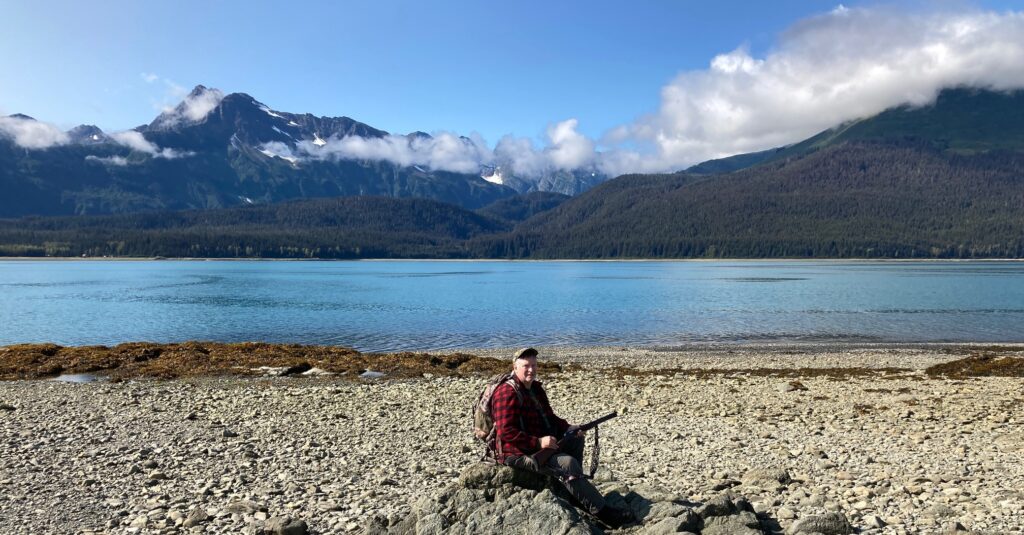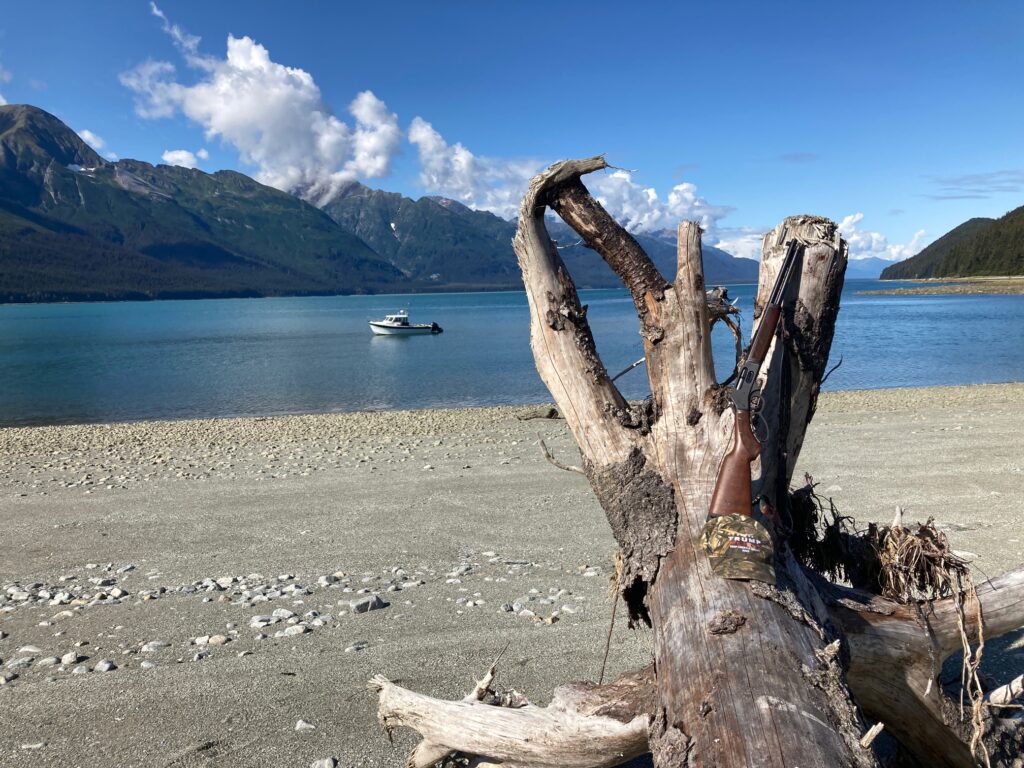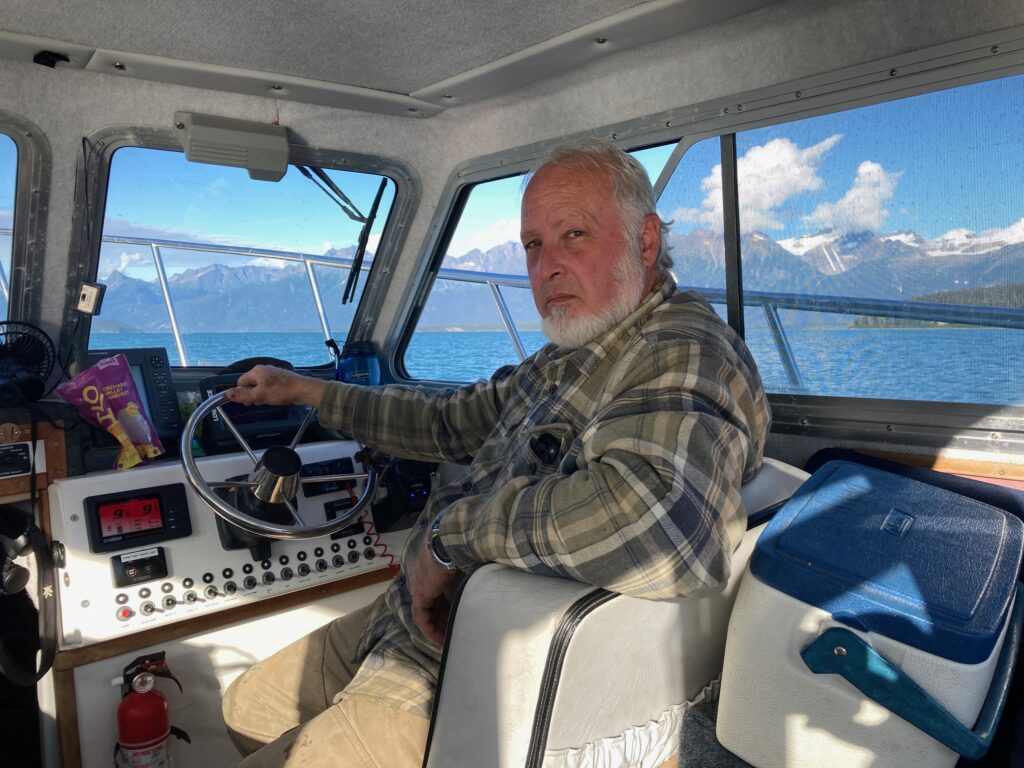Posts Tagged → 45-70
Reviewing the Marlin 1895 SBL
I have had some Marlin rifles, and what American deer, bear, or small game hunter doesn’t have one or two along the way in a life in the woods. But I never got so excited about one of them that I needed to join an online forum to discuss them and compare notes on handloads (handloads are non-commercial ammunition loaded by hand by the end-user, on a personally owned loading press, allowing the shooter to tailor ammunition to exacting tolerances and specific uses). This changed with the purchase of a new Ruger-made Marlin 1895 SBL, which I am really liking (after sending it back for much needed warranty work immediately after taking possession of it brand new in the box from the factory – ahem).
Overview
The new Ruger-made Marlin 1895 SBL (https://www.americanrifleman.org/content/2023-rifle-of-the-year-marlin-1895-sbl/) is a rugged, well designed firearm that I bought for two reasons and for two uses: It is fast shooting and unusually hard hitting within 50-60 yards for a sporting rifle, and I cannot think of a better rifle to hunt with on our bear drives here in PA and on bear hunts in Alaska.
After several months of ownership, here are my experiences with this gun.
Despite purchasing it brand new from the factory, I returned it to Marlin one day after picking it up from the gunshop, because the lever screw backed out, the action kept binding up, it was difficult to cycle the lever, had lots of sharp metal edges, and proud wood around the tang. This gun should have never been allowed out of the factory in the first place, and yet the buyer demand is so high that there must be pressure on the factory to just sling them out the door. According to reports made by other new owners, my experience is not unique. Ruger Marlin is going to kill their golden goose if they keep up this sloppy behavior. The gun is being sold on its presumed high quality.
The “Improved, slimmer” Forearm
While Marlin touts that the new, improved 1895 SBL forearm is slimmer than the old one, it is still too fat. This forearm is hardly easy to handle, and is not slim by any definition. It can easily use another 1/8” shaved off each side, or more, and tapered, like a shotgun forearm. That is, if you mean what you say about the forearm being easier to handle, dear Marlin.
Floppy Trigger Syndrome
The SBL’s factory trigger is pretty good, though it could be better. It is almost crisp, with a very defined and short step of creepy travel, and no stacking, but is a bit heavier than I and other users would like. It works well as a hunting trigger, which is all it really has to do anyhow. I don’t think this trigger was designed by a liability-minded lawyer. Other reviewers have reported that their 1895 SBL triggers were coming in between 5.5 to 8.5 pounds pull weight, and I am just guessing that this particular gun’s trigger is around 5.5 pounds. My preference would be in the 2.5-4.0 pound pull weight range, but I do not believe this factory trigger is adjustable. So “it is what it is,” as that tired old cliché goes, though there are superior aftermarket triggers available (https://www.wildwestguns.com/product/trigger-happy-kit/). One thing I do not like about the factory trigger is that it flops around and can make a tiny metallic sound. It would be preferable that it be stationary, locked in place, and not make noise. Because it’s on a hunting gun, and hunters require stealth. Nonetheless, the factory trigger works well as-is, and it certainly could be a lot worse.
One Rugged Beast
The SBL is one well made and tightly built rugged beast, and I think this is one of the main reasons for its popularity. Stainless steel and high tech laminate wood on anything, especially a firearm, mean it is made for southeast Alaska, at least, or anywhere else that is physically challenging and frequently wet and/or loaded with salt air. This is a rugged gun that should take all the wet and salty environment that could ever be encountered under normal hunting or camping conditions. The stainless steel does result in a shiny, reflective presence, however, and maybe too shiny for a hunting gun. Someone out there is going to bead blast their SBL for good reason, and thereby start a trend.
OK, I Guess Modern Hunting Guns are High Tech
Because I am a devoted black powder shooter and hunter, and because the year 1895 was the pinnacle of firearm development for people addicted to antiques and history like me, and because I prefer break-action single shots and double rifles over all other types of sporting guns, and because nicely blued or blacked steel with figured walnut make the most attractive firearms, I have heretofore been positively allergic to stainless steel and plastic modern guns. Everything about them just irked the crap out of me. Modern sporting firearms are just not appealing to me on any ground, most especially because nearly all of them are just plain ugly as hell. But in recent years I came to recognize that the most beautiful sporting arms can and likely will be destroyed by extended visits to places like Alaska, and so I came to a form of détente on this conundrum by recognizing the unique abilities of the SBL, and only the SBL. Its traditional lever action form is recognizable as quintessentially American, even in stainless and epoxy laminate.
The SBL is not only stainless steel and laminate wood that you can dig out a fox hole with, it also comes with a screw-off end cap for attaching a sound suppressor or a muzzle brake. Neither of these make any damned sense to me on this gun in the relatively quiet out-of-the-box 45-70, but whatever. People who are already crazed about suppressors and high tech gear-queer technical gobbledygook like muzzle brakes on deer cartridges will have all the joys of toys their little flaming hearts desire with this rifle’s little bells and whistles. Leave me out of it. To me, this is just a reliable, fast action mechanical gun in a caliber I can rely on in close-quarters grizzly country, end of technical story.
However, the factory attached Picatinny rail is pretty intriguing, even if it is also downright fugly as sin. It blows up and sets on fire whatever nice lines the 1895 SBL had to start with, but it is a valuable addition for those who use scopes and red dots and other training wheel tubular sighting contrivances on guns that don’t need them. I myself have not yet needed to use a scope on any gun I own, much less this lever action, and so this Picatinny rail is of no use to me. But in the interest of not “fixing” things that are not broken, I will leave it attached to my rifle and just hope it stops jabbing me in the proverbial eye every time I look at the gun.
This Gun Can SHOOT
Accuracy out of the box indicates these are being roughly sighted in at the factory with a laser bore sight, which is a good place to start shooting it in for hunting accuracy after you take possession of it. Do not take your 1895 SBL hunting out of the box! A fair amount of adjusting the rear peep sight for windage and elevation was necessary to get this one dialed in point-of-aim at 70 yards, which is the likely range I will be using it (see below for the deer I took with it this week at a measured 151 yards). Four shots were needed to get it centered, using the Hornady LeveRevolution 325 grain FTX, which is pretty much the standard factory ammunition designed for this gun.
Reloaders be aware that the loaded Hornady FTX brass is trimmed back shorter to accommodate the long ogive on their polymer-tipped FTX bullet that comes with their factory ammunition. You might be able to reload the Hornady factory ammunition FTX empty brass, depending on which bullet you use, and I certainly will try. If you are reloading with the Hornady FTX, then the empty brass can be reloaded without any fussing or fooling around. Other bullets, I don’t know. The 45-70 brass of any manufacturer is expensive enough to warrant trying to reload each one as many times as possible.
Accuracy is excellent after dialing in the open sights. Surprisingly good. Actually, amazingly good. This is, after all, a lever action with a short barrel, and historically these kinds of guns were mostly utilitarian 3” MOA (achieving three-inch groups at 100 yards) hunting weapons. The 26” barrel Henry 45-70 I hunted with in Alaska last year was achieving 3” groups at 100 yards with both Federal and Hornady ammo, so accuracy better than minute-of-deer in this thumper cartridge is a welcome surprise, emphasis being on the surprise. The SBL is very accurate, with surprisingly tight groups. I have read about many shooters getting MOA and even sub-MOA accuracy out of the 1895 SBL. Apparently even the old problematic “Remlin” 1895s had outstanding barrels. The new Ruger Marlin barrels are apparently just as good, if not better. This lever action gun provides accuracy expected of high quality bolt actions. Impressive and most welcome.
Its Open Sights
Yes, I like open sights, as you might guess. They are all I use and have ever used, and the factory supplied rear peep sight and neon yellow front sight work very well for me, especially at the fairly close distances I intend to hunt at with this gun. The sights are light years better than the Henry 45-70 I hunted with last year. That Henry had a cheap and flimsy rear sight that would constantly readjust itself out of true, which is downright dangerous in the grizzly country I was in. And yes, I was constantly surrounded by grizzlies, and so I kept checking and fidgeting with the Henry’s flimsy rear sight. This Marlin’s rear peep sight is more rugged, but it really sticks out and so it is vulnerable to catching on things and hard hits. It could use some sort of protective arch or band, which given how ugly the Picatinny rail already is, I don’t see how such a protective piece of steel could hurt the gun’s looks any more.
Built for Speed and Comfort
The SBL is fast shooting, and despite lobbing huge hunks of ballistic lead downrange, it is also comfortable to shoot. Probably due to its weight and the purposefully big and soft butt pad, I did not notice any real hard kick from this gun. But then again I am a very large framed guy with not only a lot of muscle but also a generous helping of blubber, which is like a giant shock absorber. Consider that I also shoot a .577 NE comfortably, so don’t be looking for reports of “the 45-70 kicks like a mule” here on this blog. I find it quite pleasant at the range and also hunting.
The 45-70 is No 50-110, OK?
Due to the SBL becoming so popular, much has been made about the 45-70 as some sort of atomic cartridge. Well, it’s not. The 45-70 certainly is no 50-110, which with modern smokeless powders really is a powerful stomper, and it is no .50 Alaskan, either. The 45-70 Government cartridge is not a “Jurassic” dinosaur killer, and in most ways it doesn’t come close to “boring” 30-06 performance.
For God’s sake and Goodness Gracious, it is not anywhere close to something so powerful. Yes, this 1870s black powder case is big compared to the modern bottle-necked cases we hunters mostly use today, and it has a lot of room for powder. And yes, it holds large bullets that are double or even triple the size of the typical 120-180 grain bullets we typically use for big game these days.
But way too many, if not almost all, the online video reviews of the 45-70 cartridge and this 1895 SBL rifle are done by young men wearing cool guy sunglasses and tight short sleeved shirts that showcase their pumped up biceps, bragging up how monstrously “powerful” this “howitzer” cartridge supposedly is (accompanied by the inevitable macho heavy crunching rock guitar musak). The implication being that they are powerful and macho as heck, and you can be, too, if you just own this rifle.
So powerful, so awesome, so macho. Barf, puke. No.
Wrong, guys. Holy smokes, people, calm down. Put down the new toy and get a grip on reality. Stop and back up to the technical reality that simple science imposes on this 45-70 cartridge and on every other cartridge, for that matter. Put away the emotional nonsense, the ego, the lame desire to be seen as cool, or tough, or macho. The 45-70 is not that powerful, nor is it macho. Owning a lever action 45-70 won’t make you cool or make your you-know-what bigger.
We Americans do like our big trucks, big engines, big homes, big landscapes, and big bore firearms, no doubt. And I am all for all of that. But the 45-70 is just nowhere near what so many people promote it as, some kind of crushingly, overwhelmingly powerful “Jurassic dinosaur killer.” Even its modern loadings in the updated Speer and Hornady manuals pale in comparison to the apparently boring old .30-06 and even the .308. And 45-70 brass is prohibitively expensive, not to mention the high cost of better factory loads, which are somewhere about two fifty per round.
In short, an American deer and black bear hunter can get much better performance and value with any off-the-shelf 30-caliber rifle than with the 45-70. The 45-70 requires an awful lot of tweaking and handloading to get it into the realm of impressive. And even at its most impressive, it is still overshadowed by the boring old .30-06 for general duty. And the .270 Winchester, .308 Winchester, and proprietary Marlin rounds like the .338, too, for that matter.
Sorry to all the macho strutting young bucks on YouTube, but your new toy is not that big or impressive! Please don’t cry!
Where the 45-70 shines these days is with just a few modern smokeless powders married to just a couple really modern solid bullets, in a fast handling, fast shooting, high quality lever gun like this 1895 SBL, at relatively close range, for fast follow-up shots on tougher-than-average critters that can stomp and eat you if they get too close.
That’s it.
That little description above is the narrow application for the 45-70 cartridge that is superior to most other sporting cartridges. Put a big, heavy 50-caliber hunting round in a Winchester Model 71 lever action, or in a Winchester 1886 lever action, and the 45-70 again falls into a far distant second choice for big and dangerous game.
But neither the old Model 71 nor the Model 1886 are made in stainless steel by one of the best gun makers.
And this reason above is why I have selected the 1895 SBL in 45-70 to be my new bear hunting rifle in Alaska and for bear drives in Pennsylvania: It is rugged, fast shooting, and potentially very hard hitting at close range with solid bullets.
If I am sitting on a hillside calling to black bears, which might require a 100-150 yard shot, then I will use a longer range bolt gun or double rifle with a flatter trajectory. One guy I know of has used the 1895 SBL for big game in Africa, but again, using a very narrowly designed combination of powder and high tech solid bullet at short range (see below).
If I were simply hunting black bears in open country, at ranges up to 200 yards, with occasional grizzlies around, like southern Alaska, Montana, Wyoming and Idaho, the 1895 SBL would not be my choice. Not even in my top five choices. Rather, a more powerful rifle with a flatter trajectory would be my first choice, such as a .300-.338-.375 magnum bolt action. If I were hunting black bear way down the southern Alaskan coast, like on the islands from Juneau south, where brown bears (grizzlies) are far fewer and black bears are much more numerous, then I would take a .308 or .30-06 and dispense with the need to cover myself in case of short range ambush charges from the really dangerous bears in heavy Alaskan jungle cover.
Summed up perfectly by a federal wildlife employee who hunts big game and also dangerous game with the 1895 SBL in Alaska and Africa, who goes by the online name Tundra Tiger, “It is true: [the 45-70 Govt.] comes with a shorter effective range than some other calibers. However, if one chooses to recognize its limitations and work within them, I don’t see what the issue is [with hunting dangerous game with it].” He has taken some dangerous game in Africa with his Marlin lever action 45-70 using just one bullet, the Cutting Edge Bullets 325-grain solid brass bullet (https://cuttingedgebullets.com/458-325gr-lever-gun-safari-solid).
In Closing
I am sure that plenty of people can and will find a way to make the 1895 SBL in 45-70 round their home defense gun, their everyday big game hunting round, whatever, and that is fine. Why not, it’s a gun, which is better than nothing for self defense. It is far better than a baseball bat, which like all striking or stabbing weapons requires you to close with your opponent. And it is far better than calling 9-1-1 and waiting for your spirit to watch the EMTs zipping up your corpse in a body bag while the police show up to write a report about the crime scene. Lever actions are fast, and being mechanical, they are reliable and theoretically less susceptible to jamming problems than semi-autos, which are notorious for jams.
And lever actions have always made good hunting guns.
For most of my big game hunting, I prefer old guns shooting black powder at relatively close range that pack the same punch as the modern 45-70, or more, or more modern but still old centerfire guns of blued steel and aged walnut shooting modern bullets at woods range, in calibers like the 7x57R, 243, 308, 270, and 30-06. Like within 100 yards, without all of the unnecessary hard work trying to figure out how to make my short barreled lever action firing huge hunks of 45-caliber lead and brass with rainbow-shaped trajectories into performing like a flat shooting bolt action in a caliber nearly half the size of the 45-70.
AGAIN, this gun was purchased for just three reasons: 1) It is constructed of the most weather-resistant, durable materials possible in a firearm, stainless steel and high tech epoxy laminated wood, 2) the lever action is extremely fast, much faster than a bolt action and even than a pump action, and finally, 3) when properly loaded with the proper high-penetration solid bullets propelled by generous and safe amounts of powders like R7 and IMR4198, this modern 45-70 lever action provides the best combination of a practical stalking rifle for black bear in Alaska with a practical emergency short range defense weapon against grizzlies.
Loaded hot with the proper (heavy high quality solids going 2,000-2,100 fps) bullet, the 45-70 does its best better than most calibers within 50 yards. Only a short-barreled 12-gauge pump shotgun accurately shooting high tech heavy slugs is a superior, equally reliable defensive long arm than the properly loaded 45-70 lever action. But I would not take that same 12 gauge short barreled shotgun bear hunting, because it is really limited in range, even more limited than the 45-70.
AGAIN, I bought this gun only for a) hunting in Alaska, which is brutal on firearms, and, thus, where a stainless steel gun will do best, and b) for bear drives in northcentral Pennsylvania, where fastest-possible shooting (i.e. lever action) at short ranges in thick laurel are the norm. Our PA bear drives are brutal on guns, boots, clothing, and every other piece of gear you have. One of my friends broke his brand new Remington 7600 pump action 30-06 stock in half on one of our bear drives. Alaska is also known for eating firearms alive, especially the southeastern coastal strip, where endless rain and salt air will corrode and rust blued metal, and mildew and rot traditional walnut stock wood, in just a few days. So the Marlin 1895 SBL really fits the bill in these two tough hunting environments.
I am presently testing my own hand loads using 16:1 and 20:1 alloy cast bullets and the Cutting Edge Bullets 325 grain solid brass bullet at 1950-2100 fps. Field reports from Alaska to Africa indicate that this CEB load in the 1895 SBL is more than adequate for both hunting black bears and also for defending against attacking brown bears at powder-burn range (and yes, grizzly attacks happen frequently).
Readers interested in understanding how modern (i.e. last ten to fifteen years) bullet technology in an 1870s cartridge like the 45-70 creates a lot more flexibility and dangerous game ability (i.e. grizzly/ brown bears in Alaska) should read the following online discussion threads:
https://www.africahunting.com/threads/45-70-for-dangerous-game.6852/
And for those hunters and bystanders interested in what a properly loaded 45-70 lever action rifle can achieve against dangerous game, Vince Lupo’s reports about his African safaris are amazing: https://www.leverguns.com/articles/lupo/lupo.htm
p.s. Men and Their Personal Weapons
Men have always cherished certain weapons. A boar spear that saved your life once, a sword that swings just perfectly in battle, a custom hunting knife made specially for us and used to gut and butcher our hunted game many times, or a well-made trusty poniard on the hip in case of trouble while at market. For thousands of years we men clutch these things close, reflexively place our hand upon them when at rest, and stare at them lovingly from across the room, because they reliably work for us daily and we can always rely on them in a tight spot. And because these weapons speak to us, us men, through their beauty, and because very often they speak for us, they come to represent us. To stand for us. We identify ourselves through them.
And so I say, you men on YouTube and elsewhere are in really good company, in your admiration for the stainless steel and laminate Marlin lever actions, like this 1895 SBL. Their robust build, certain mechanical reliability, and extremely durable materials are all big draws in a world of semiauto jams and broken parts and surprise rust at just the wrong moment. This gun is the equivalent of a good heavy steel-tipped spear a thousand years ago, and it just feels right, hefts right, in our hand.
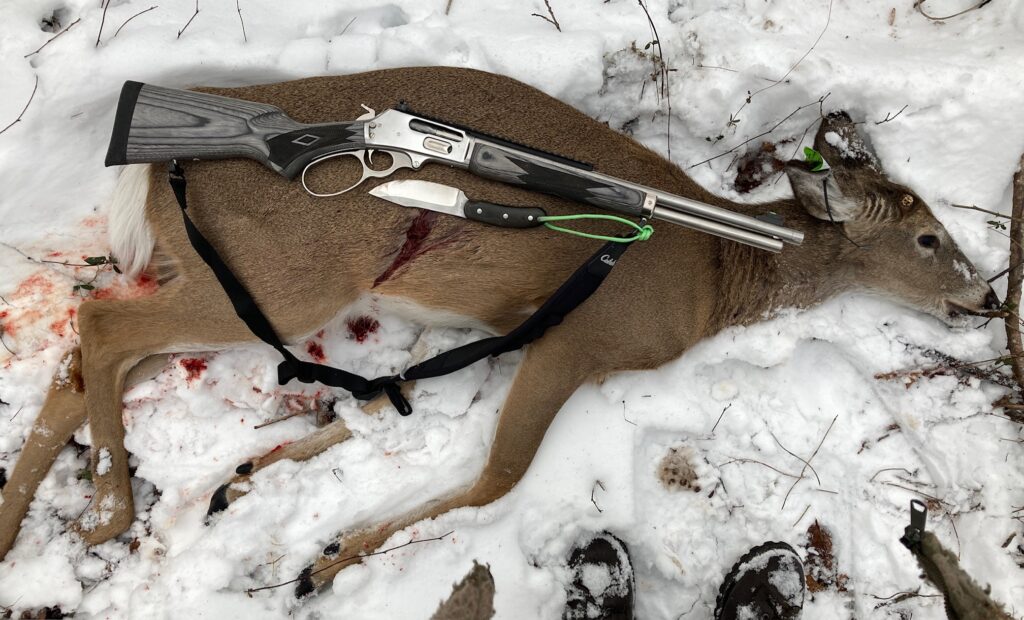
Deer I stalked and shot at 151 yards this week with the Marlin 1895 SBL. The 325-grain FTX bullet passed through lungs and stomach without slowing. Custom knife by JRJ John Johnson.
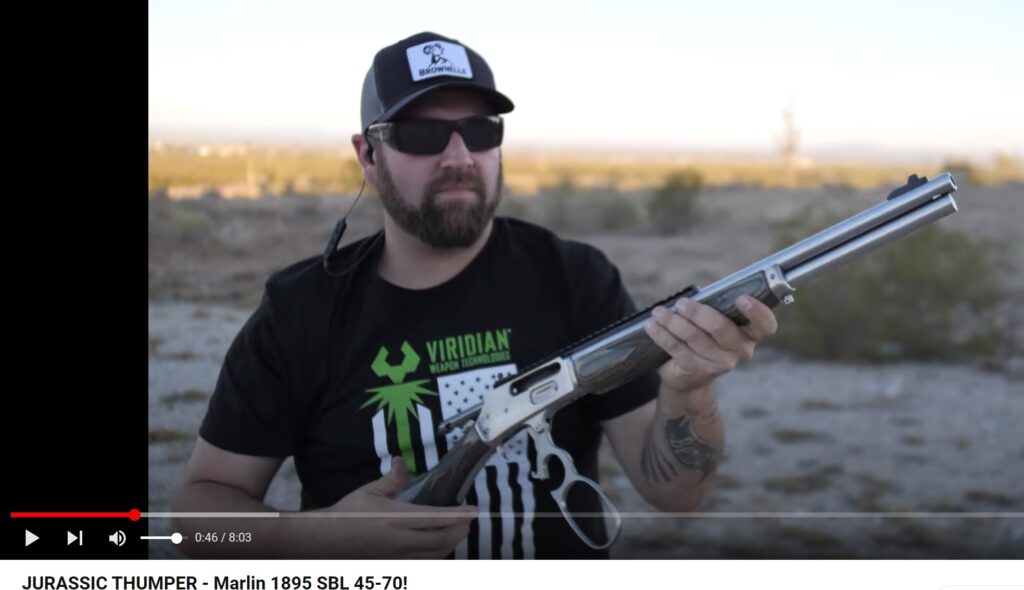
Exhibit A in macho gun reviews. Joe Cool shades in the shade. Biceps. Etc. Unfortunately, this rifle will not make his or your you-know-what bigger.

A 45-70 dangerous game round I loaded, using the 325-grain solid brass bullet by Cutting Edge Bullets. This is for stopping a grizzly
A fabulous hunting trophy
Another PA archery season over (UPDATE: No, it wasn’t over, I have not kept up with new PA archery season dates), another season I did not arrow a deer or a bear. It’s not that I could not have killed a buck with a gigantic rack, I could have, a hundred times. It is that I chose not kill him. He isn’t necessarily tame, but he has been hanging around an awful lot. It would have been easy to send an arrow or a bolt through him from a porch or an upstairs window. But in my old-er age, I must be turning soft-hearted. He even came into a ground blind I was in with a crossbow, and puttered around. I decided to admire him, instead.
Just seeing wild beauty like his brings me real pleasure. I don’t need to put his head on the wall for him to make me happy.
Even without killing a black bear or a wolf, I still got an amazing trophy from my Alaska hunt in September. And no, I am not referring to the beautiful stones and colorful pebbles I bring home with me as keepsakes from all around the world. Alaska streambeds were loaded with all kinds of incredible geological samples, and I could have easily filled a pickup truck bed with the easy ones. Instead, I picked up a memento of someone else’s kill, and brought that home with me.
While I was stalking a salmon stream in the northernmost part of southeast Alaska eight weeks ago, cradling a 45-70 rifle in my arms and looking for black bear feeding on spawning fish with one eye, or a wolf, and watching out for the ever-present brown bears/grizzlies with the other eye, I happened upon a scattering of big bones up against a stream bank. Bleaching white on the top side, and staining green with algae and moss on the bottom side, these bones marked a kill site. From what I could piece together, a two-year-old moose had made a stand against a pack of wolves or a large grizzly on this site, and had lost. It was right here where he had died and had been eaten.
One bone in particular caught my eye, the hip socket, sitting concave-side-up to the sky. What made this individual bone stand out so much was both how perfectly round it was, and yet how it was also framed on three sides by heavily fragmented and fractured ends of bone. Something really big had broken this heaviest of bones, and the tooth marks are still on the socket. As artists are fond of saying about something that catches all of the visuals just right, it was a study in contrasts.
I bent down, picked up the broken socket bone, brushed off the dirt and leaves, and stuffed it into my backpack among the long underwear and my PB&J sandwich. Back home in Pennsylvania, it was cleaned off, lightly bleached, and re-purposed into a pipe holder and ashtray. It is actually incredible how perfectly my tobacco pipe fits into that hip socket. Now I can use the bone as both an ashtray and a reminder of being in some of the world’s wildest country.
As soon as it dried, I sat down to enjoy a bowl of cherry cavendish, and with the light tobacco smoke swirling up around my head, I was immediately lost deeply in thought about God’s magnificent creation, the amazing wild beasts that have inspired us wee humans since our dawn here on Planet Earth, and how a hunting trophy is what you make of it. It doesn’t always have to be something you killed yourself. Sometimes it is just a small piece of the wilderness we love that serves as a symbolic touchstone and a time machine that transports us back to a place and time where all that mattered was the wind direction and the smell of Fall in the air.
Looking at this ten thousand years ago or fifty thousand, any Neolithic hunter anywhere around the planet would have felt exactly the same way. This one piece of fractured bone connects us two hunters across time, even though we never met.
A few more thoughts on Alaska gear & public land
Even people who will never hunt in Alaska want to know what kind of gear a guy carried while he was there, and they might even have some opinions about it. Alaska is kind of the go-to place for all imaginary hunts, survivalist prepping, and bush homesteading, and you can go on YouTube and on any related video find endless debate about guns and gear by all kinds of people, 99% of whom have never been to Alaska. After the “Thousand Overnight Tragedies” essay here a week ago, I got some questions about my hunting kit from people who will never do anything more than a luxury cruise to Alaska. I know well that if a couple guys ask, there are more who want to know but didn’t ask. So here goes, my best advice on how to be properly kitted out for Alaska.
First off, before assembling your Alaska kit you have to determine if you are staying out in the Alaskan wilderness. Plenty of people get air dropped into a remote wilderness spot, tent up near the lake or river where the float plane landed to drop them off, and that’s their base camp they hunt out of every day. It is the same place the plane will pick them up from in a week or ten days. If this scenario is how you are heading into Alaska to hunt or fish, then you need all of the survival gear, various fire starting methods, a beacon, etc. kit that you would need while wilderness hunting anywhere else in North America. My Seek Outside tipi tent with the large titanium wood stove has made all of the difference for how I hunt in wilderness (thanks to Ranger Ian for his guidance on this years ago after I reported how I nearly froze to death in his service territory).
Second, the month of year really makes a difference in Alaska. I have been there in July, August, and September. July and August are usually quite comfortable. In September you are beginning to get some chilly nights, and possibly chilly mornings. Maybe a chilly day. Warm clothing you can easily layer on and off, like a Filson wool vest, becomes critical the later it gets after August ends.
Finally, where exactly in Alaska are you going? Central Alaska encompasses most of the state, and it is kind of the rugged classic interior Alaska everyone thinks of when they imagine Alaska. But all of the state’s coastal areas are really different from the interior, especially as you begin to head north or south of Anchorage. Southeastern panhandle Alaska is a temperate rain forest. It rains there even when it is not really technically raining. Something like fifteen to twenty FEET of rain falls there in the southeast. Obviously you have to be prepared for regular rain if you are hunting and fishing in the panhandle.
If you are hunting out of an Alaskan home, say your friend’s or your cousin’s, or from a lodge, and then driving or boating to your destination each day, with plans of returning before dark, then here is the kind of checklist you will appreciate:
- Rubber rain suit, jacket with hood and pants. My 25-year-old Cabela’s blue rubber rain suit worked fine for both repelling the constant light patter and sometimes more steady rain. It also served as my wind breaker with only a tee shirt underneath. Blue is a bad choice for hunting, because many animals see blue like humans see fluorescent orange. When my blue rain suit finally dies, I will get a green one.
- Good rubber boots and also good leather hunting boots. I used both, sometimes on the same day, the rubber ones in the morning and the leather ones later in the day, or vice versa. If you are hunting hard, you need rigid ankle support, and I have not found a better boot for hunting in steep, rugged terrain than the Danner Canadians. I especially relied on the Danners on the SE AK island we hunted for blacktail deer. For this recent trip I finally bought my first “good” pair of rubber boots, the only “hunting style” rubber boots that properly fitted my enormous duck feet, by Irish Setter. These worked great in all wet environments I encountered, many of which were the margins and shallows of salmon streams. A PEET boot dryer is a good thing to have waiting at home at the end of the day.
- A light day-use backpack holding extra clothing, extra ammo, food, water, GPS (I use a Garmin 62s with detailed mini SD card maps) a range finder, binoculars, etc is an absolute necessity. My LL Bean hunting pack has accompanied me on hunting trips from the Scottish Highlands to Alaska and a lot of places in between. It is a fabulous and extremely durable, well thought out piece of kit.
- Binoculars are essential in Alaska, because it is such big country. Doesn’t matter if you are hunting or fishing, you absolutely must be able to see what is happening around you, if for no other reason than Alaska serves up cantankerous grizzly/ brown bears by the minute almost everywhere you go. And occasionally mean moose. Plus binoculars help you see game you are after, or maybe circling marine birds distantly picking off scraps as larger fish feed at the surface, where you can easily catch them. Leupold has been my USA-made go-to binocular maker for a very long time, after using various Nikons for a while. Yes, you can’t go wrong with Swarovskis or Zeiss, but I am brutal on my gear, and I will cry like a baby if all 265 pounds of me face plants on top of the $3,000 binos strapped to my chest. So I use a pair that are almost as good as the $3,000 pair, but which cost about 800% less.
- Range finder. Any modern range finder is useful for hunting in big country like Alaska, except over water. If you are hunting directly over a large body of water, then you need to calibrate your piece, or it will give you whacky results. I use a Nikon Forestry Pro because I work in the forest products and land business, but it has also served me just as well in hunting. I have learned that this model is rugged, because I use mine so much, in so many tough environments.
- Knife. Yes, you need a strong, sharp knife to go hunting correctly. I won’t wade into the whole which steel is better than my grandma’s Old Hickory no-snob high carbon potato peeler knife. And if anyone ever says the word “bushcraft” within arm’s length of me, you’re gonna get a healthy serving of country whoop ass. Because I can’t take it any more. The whole “bushcraft” genre is such urban flatlander weekend warrior nonsense, for God’s sake, let it be, leave it alone, leave it behind. A hunting knife can be almost any shape, size, and steel type that has worked well for you in the past. The Inuit and Inupiat just south and north of the Arctic Circle use Old Timer pocket knives, grandma’s ulu made of whale penis and wrought iron, and occasionally a high quality modern “huntin‘ knife” left behind by an appreciative tourist hunter. And guess what…all of these various shape knives work just fine for the subsistence lifestyle a lot of Inuit and Inupiat live. And they kill, skin, dissect, and eat raw on the spot – with their varied assortment of knives – more critters in one month than you will kill in a lifetime of Lower 48 recreational huntin‘. I happen to use various JRJ knives made by John R Johnson of Perry County, PA, because his ATS-34 steel and overall craftsmanship were as good as any huntin‘ knife available anywhere on the planet. Unfortunately, John has not made a knife in almost ten years. Fortunately, for years I bought armloads of knives that he custom made for me, and I enjoy using every one of them every season.
- Rifle. Yeah, some guys hunt Bigfoot with a souped up .44 Magnum or 454 Casull handgun. So what. A rifle is light years better than a handgun in every way, and I hunt big game only with a rifle, especially in real big country like Alaska. On this recent trip I carried my friend’s Henry 45-70 lever action, loaded with the Federal Premium HammerDown 300 grain rounds. There are hotter, more effective 45-70 rounds available from CorBon and Grizzly, but I was happy with the 3″ 100-yard performance of this round out of my friend’s rifle. And I don’t know how up to snuff the Henry is with the hotter 45-70 loads. The problem with the Alaska panhandle is that the weather there absolutely eats guns. If the saltwater doesn’t kill your gun, the constant rain and moisture will finish the job. A stainless steel gun like the Marlin 45-70 SBL is probably the best possible hunting rifle for Alaska. And this gun can handle the hottest 45-70 loads. One comment about the Henry: Its rear sight was very frail and kind of sad. It moved around all by itself, which can result in a severe mauling or death by Griz, if you happen to not check up on the rear sight and adjust it as needed every ten minutes.
- Backup pistol and bear spray. Bear spray works very well in places without wind or breezes. If you use bear spray in a place with wind or strong breezes, you are likely to incapacitate yourself instead of the bear (insert stupid human hungry bear joke here). I happened to be hunting and fishing in a SE AK place with constant winds and breezes, so I dispensed with the bear spray and kept a .44 Magnum revolver on my hip, loaded with some bear-buster ammo and not the ubiquitous 240 grain JHP that is guaranteed to piss off Griz more than kill him. Speaking of backup, I carried an emergency beacon of unknown make or vintage on most of my hunts.
- Clothing. My old tried-and-true Cabela’s Gore-Tex hunting pants were perfect for the cooler days, and my old tried-and-true Columbia nylon zip-off cargo pants were perfect for the warmer days. A wool hunting shirt in red and black buffalo plaid (of course) with some thermal long underwear is all I needed in the early season. I wore a no-name fluorescent orange fleece hat as well as my 2020 Trump hat. Sometimes together when it was cold. Mid to late September and beyond, you need real cold weather gear.
Good luck if you go DIY hunting in Alaska. DIY solo is my thing, and I think it is the most fun way to wilderness hunt. The challenge with DIY in Alaska is it is so big, and the critters are so big, and the distances are so big, and the civilization is so small and so far away. You really can’t do a DIY hunt by yourself in Alaska. It is not safe, and a thousand things can go wrong after you are successful and kill the animal of your trophy dreams. Go with a friend, go with a guide. And be smart about balancing your kit with practical items you are truly likely to need. Hunting in Alaska is not automatically a survival test or a Bataan Death March. You don’t go to Alaska and automatically plunk yourself down in the woods and start doing a video on (puke) bushcraft. It isn’t all dangerous, nor is Alaska all wilderness. Plenty of good hunting and fishing is available a decently brief drive out of any of the major cities, but it does get better the farther out you go.
Speaking of going further out of civilization, all this amazing hunting and fishing and trapping in Alaska is possible only because of the huge critical mass of public land there. Yes, I agree that federal and state agencies sometimes mis-manage public land. And sometimes those agencies end up “mis-managing” their relationships with the American citizen taxpayers who pay the agency staff and who own the public land the agencies are supposed to steward. But I think that public land is one of the very few things that government does pretty well. And even when government staff screw it up, the public land is still there afterwards.
A thousand overnight tragedies
Normally, the smell of rotting fish is a signal to clean out the fridge or to leave the area you are in. It’s a universally bad smell, and no one normal wants to be around it. But it was a pervasive good sign where I happened to be standing, because it was associated with the freshly dead salmon heads and remains at my feet that had not been here the previous afternoon. A thousand individual tragedies had occurred along this stream bank overnight, as bears had picked muddy bank spots to grab spawning salmon and take them uphill where they could eat them without the fear of being ambushed by humans, or bigger bears.
We had hunted and fished along a roughly seventy mile vertical stretch of southeastern Alaska for over a week, and in addition to beginning to smell a little fishy myself, I had also saturated and possibly satiated a cavernous need inside me. It is an ever-present deep, clawing need that most wilderness seekers share, be they bikers, hikers, canoers, campers, photographers, fishers or hunters. Sorry, I am not going to quote Thoreau or Muir or Roosevelt on the tonics, joys, highs, or benefits of directly experiencing wilderness. My own wilderness pleasure is gained from simply not seeing a single other human being (except my hunting/fishing partner, when I have one) anywhere near where I am hunting or fishing. That unusual moment results in me feeling like I have better than average odds of achieving my goal, because I have the whole landscape to play without intervention.
On this trip, my “public” goal was a wolf, a blacktail deer, and/or a big black bear better than 300 pounds. Hides and skulls alone were going to come home with me. Edible meat was going directly into my buddy’s freezer. All of the many salmon I caught on the trip went into either my buddy’s smoke house, into his freezer, or into my stomach. It pleases me to report back that chum (dog) salmon directly out of the ocean taste damned good. It is also a fact that chum salmon do not keep well overnight, and that even halibut turn up their noses at it. I suppose freshly caught chum can be immediately canned, but given that there are usually better alternative salmon species to eat and can, I don’t see why a person would make this choice.
Incidentally, about those salmon: Alaska’s management of its salmon runs has been so good, so professional, so scientific, and so successful, that there is actually a glut of salmon in the streams and on the American market. Therefore, wild caught salmon prices are way down. A lot of commercial salmon boats were out netting, and the cannery we visited was in business, but with diesel fuel at about eight bucks a gallon there and salmon at eighty cents a pound, it’s hard to see how the netters will survive. But thanks to the Alaska Department of Fish & Game, the bears have plenty to eat before denning and hibernating for the long, cold Alaskan winter.
Goals are critical on a wilderness trip. Even stupidly simple ones. You have to have goals before you set out on a trip like this, or else you will wonder what the heck you were doing out there when you get back to civilization. My actual personal goal was simple: To fish and to hunt as much as I could, and this goal was easily met. On this trip, I was often able to do both hunting and fishing simultaneously: We slowly trolled salmon spoons behind the boat while glassing the shorelines for critters. A rubber dinghy towed in the backwash provided us the ship-to-shore transportation we needed. See a salmon stream that is calling your name? Go ashore and hunt it, and look for salmon-eating black bears to fill some tags; and look out for the griz. We saw a lot of griz.
Only saw wolf tracks in one very remote spot, and I passed up the one black bear I had a shot at. Only twenty feet across the salmon stream from me, he was either a genetic runt, an ancient-looking yearling, or maybe a female. Whatever kind of black bear he was, he was crabby enough to growl at me before shambling off to less crowded fishing spots. I wouldn’t shoot a bear that small in Pennsylvania, and I sure wasn’t going to fill my Alaska tag with it. Maybe I will go back for the spring bear hunt in 2024.
Despite fighting our way up into the interior of an island known to have blacktail deer, we saw none and feared the griz there more than we were willing to keep going after deer. Signs of griz were everywhere. I picked and popped high bush cranberry and high bush huckleberry while noting the increasing deer browse the farther in and higher I got. But it was a veritable jungle, and surprising a griz up here would mean my certain mauling, possibly my death, and so I decided to nicely frame my deer locking tag when I got home instead of risking life and limb to fill it. I headed back out and found Merlin asleep in the sunshine on the beach.
A loud thud on the bottom of the boat awakened me from my cramped sleeping position, and I rolled out of my sleeping bag onto the cabin floor, which was cluttered with gear and guns. Walking out onto the deck to look for the source of the thump, I saw a sea lion, a seal, and a pod of porpoises chasing salmon all around us in the early morning dimness. Mist rose from the water, and then the rosy tint of dawn’s first sunbeams lit up a nameless glacier high up in the crags across the water. I felt stoned on all this Mother Nature. Like I said, I was there just to hunt and fish, and whether or not I went home with the physically tangible results was not nearly as important as absorbing and sucking up the magic around me and filling that big, hungry, empty cavern in my soul. You just can’t have this magical experience without public lands, and some of that designated as wilderness. This, these, we had.
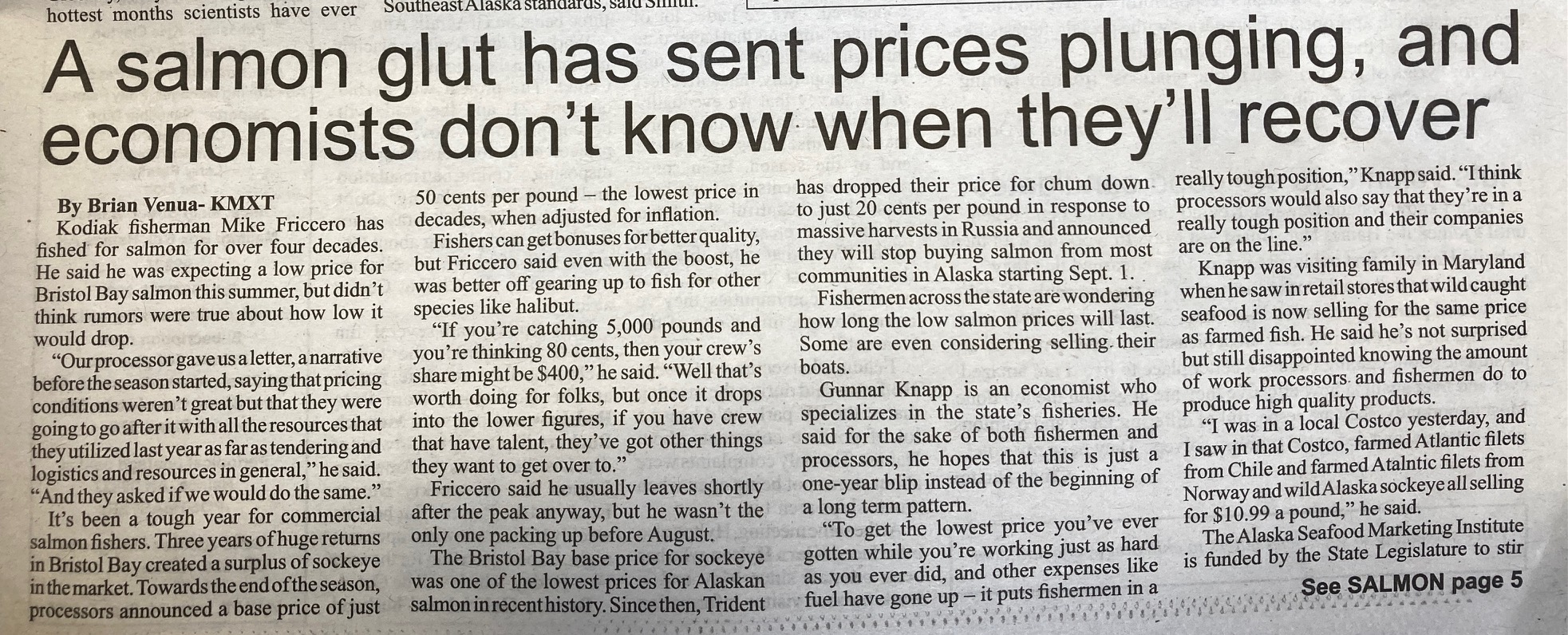
Alaskan salmon management has been so good that there are actually “too many” salmon, if there is such a thing
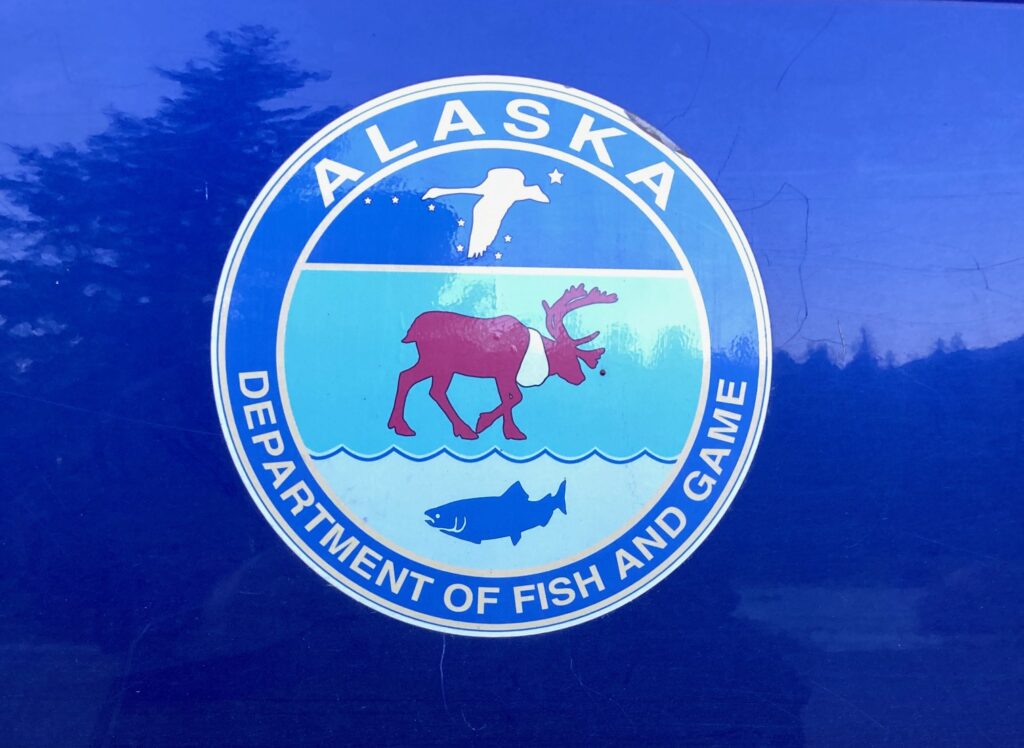
Reflected is the Chilkoot River, where we fished with the bears and a gaggle of international tourists following them up and down the river
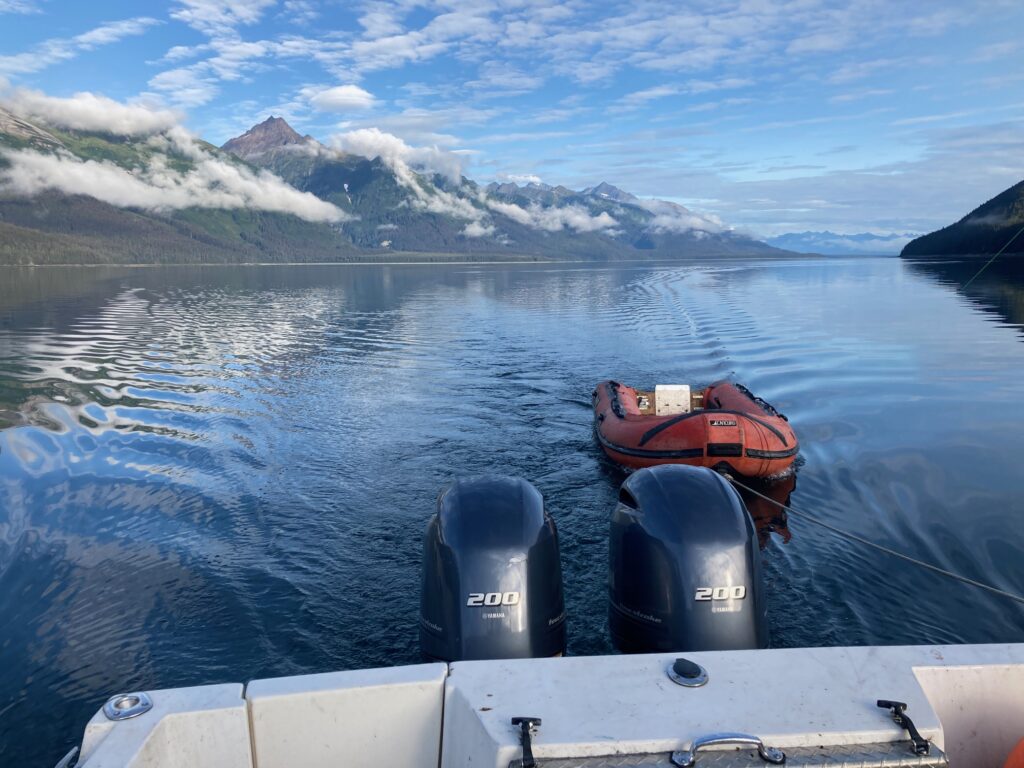
Trolling spoons for salmon, towing our dinghy, and glassing the shoreline for critters. This is hunting and fishing at the same time
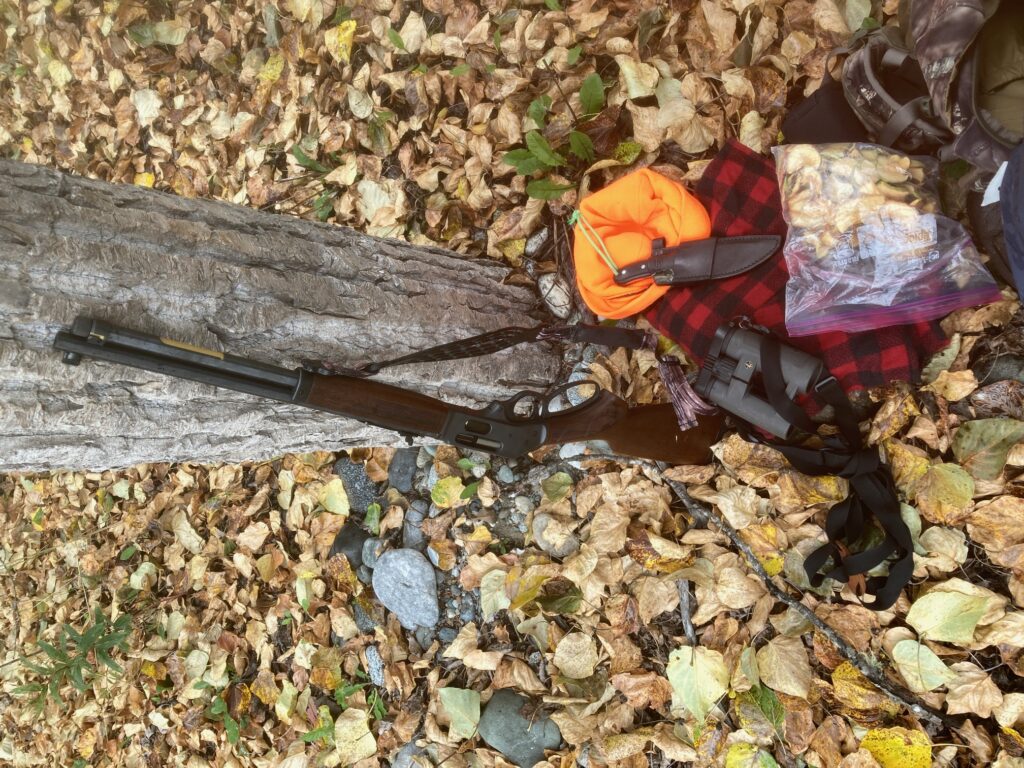
My hunting kit. A Henry 45-70 lever rifle (not crazy about the cheesy rear sight), a JRJ knife, rugged Leupold binoculars, home made dried fruit and jerky
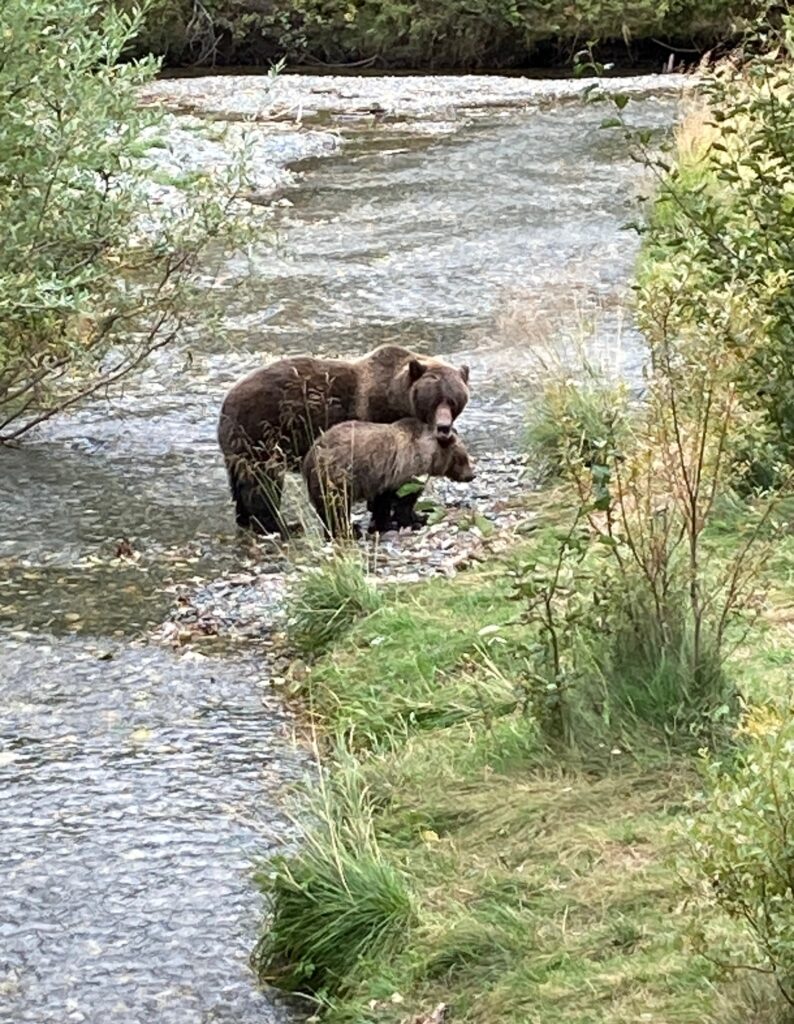
Grizzly sow and cub eating salmon as they spawn upstream from the Chilkat River. I saw a lifetime supply of griz on this trip.
